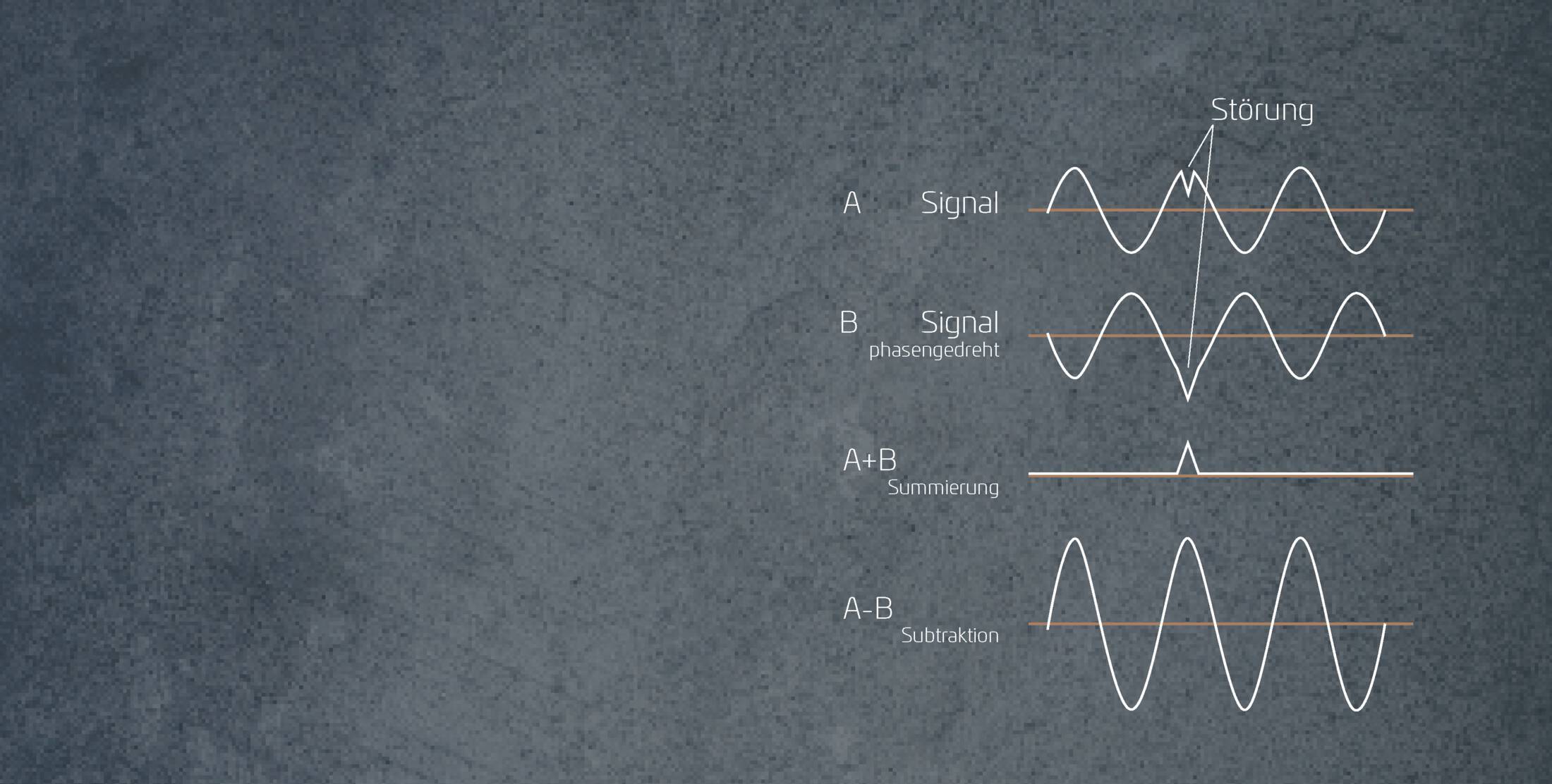A balanced cable comprises two conductors for the useful signals and an earth conductor, which is used as shielding. The signal conductors are in phase opposition (one for "minus", one for "plus") and are usually twisted to optimize the electromagnetic properties (twisted pair cable). This polarity reversal (phase shift by 180° - in the input of the receiver device the polarity of the signal of one wire is reversed) eliminates interfering signals from outside and thus only the pure useful signal remains. Therefore, balanced cables are particularly suitable for longer signal paths. The most common balanced cables types are microphone cables (XLR cables) and the stereo mini jack cables known as "AUX" cables, which are used, for example, as a connection between a cell phone and a hi-fi system or mixing console. Another advantage of a balanced cable is that phantom power can be fed through it as supply voltage (e.g. for condenser microphones or active DI boxes).
Guitar cables or general instrument cables featuring 6.3 mm mono jack plugs or cinch cables are typical unbalanced cables. Such an unbalanced cable’s design features a single-core, shielded audio line, in which the shielding is simultaneously used as a necessary second line. The useful signal is transmitted via the main wire. Due to this design, transmissions are more susceptible to interference, so instrument cables should rather be "kept short" (approximate recommended lengths: up to 9 meters, not longer than 15 meters). We recommend the use of a DI box (which "balances" the signal) for longer distances.
